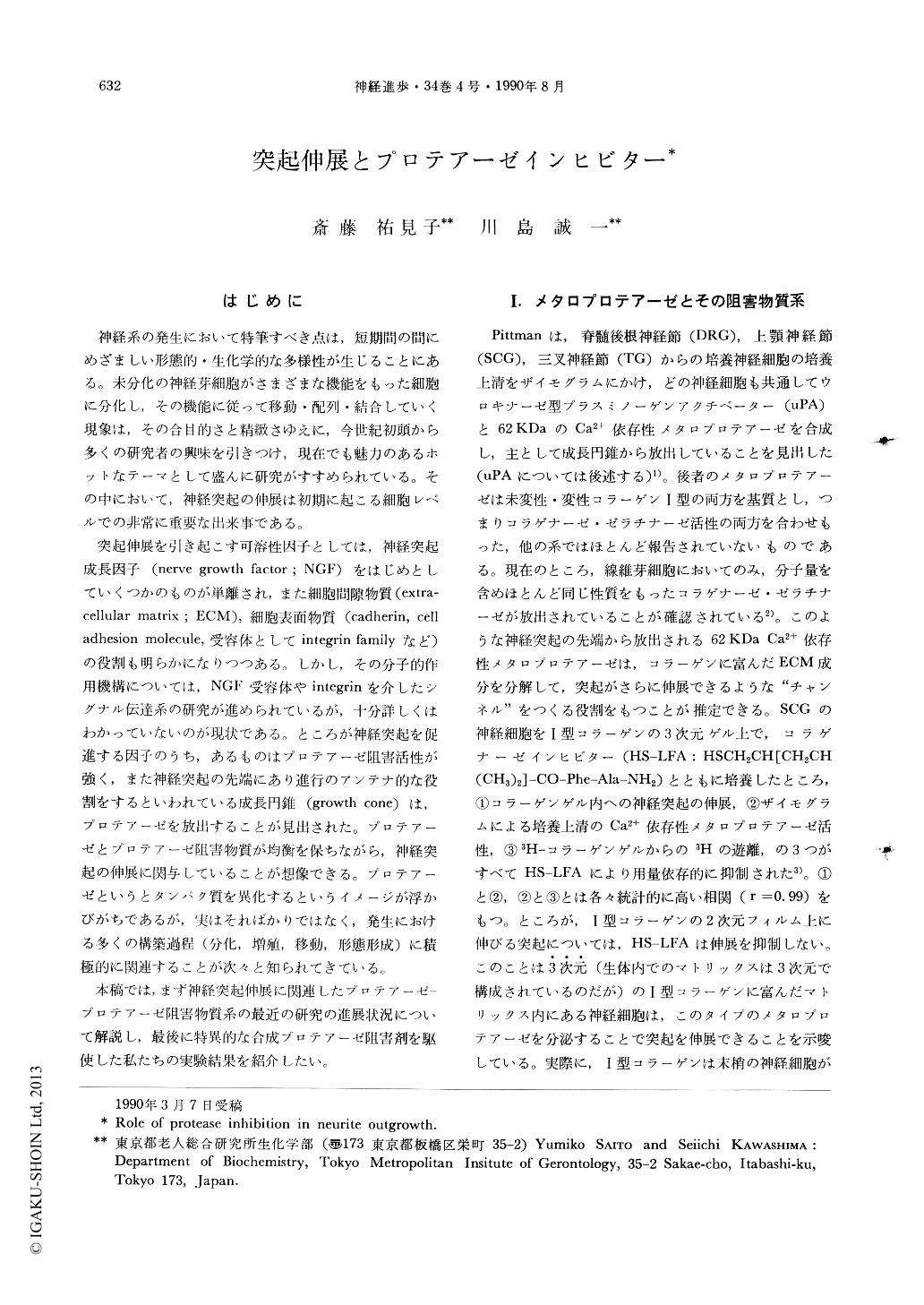Japanese
English
- 有料閲覧
- Abstract 文献概要
- 1ページ目 Look Inside
はじめに
神経系の発生において特筆すべき点は,短期間の間にめざましい形態的・生化学的な多様性が生じることにある。未分化の神経芽細胞がさまざまな機能をもった細胞に分化し,その機能に従って移動・配列・結合していく現象は,その合目的さと精緻さゆえに,今世紀初頭から多くの研究者の興味を引きつけ,現在でも魅力のあるホットなテーマとして盛んに研究がすすめられている。その中において,神経突起の伸展は初期に起こる細胞レベルでの非常に重要な出来事である。
突起伸展を引き起こす可溶性因子としては,神経突起成長因子(nerve growth factor;NGF)をはじめとしていくつかのものが単離され,また細胞間隙物質(extracellular matrix;ECM),細胞表面物質(cadherin,celladhesion molecule,受容体としてintegrin familyなど)の役割も明らかになりつつある。しかし,その分子的作用機構については,NGF受容体やintegrinを介したシグナル伝達系の研究が進められているが,十分詳しくはわかっていないのが現状である。ところが神経突起を促進する因子のうち,あるものはプロテアーゼ阻害活性が強く,また神経突起の先端にあり進行のアンテナ的な役割をするといわれている成長円錐(growth cone)は,プロテアーゼを放出することが見出された。
We described recent advances in studies on the role of protease-protease inhibitor systems in neurite outgrowth and introduce our finding that a new type of protease may be involved in the early stage of neuronal differentiation.
A number of investigators reported that the relationship between protease and protease inhibitors is likely to be important for neurite outgrowth. Proteases released by growing neurites appear to be involved in neurite outgrowth. Primary cultures of mouse sensory neurons and rat sympathetic neurons release plasminogen activators (PA) and a Ca2+ dependent metalloprotease from distal processes and growth cones. A thrombin-like serine protease released by growing neurites has been suggested to play an important role in neurite ourgrowth from neuroblastoma cells and rat sympathetic neurons. In addition, glial and heart cell inhibitor of PA and thrombin (43 KDa: glia-derived protease nexin, and 50 KDa: heart-derived trophic factor, respectively) increase neurite outgrowth. Hirudin which is thrombin-specific inhibitor caused neurite initiation from neuroblastoma cells. These observations are consistent with aPA and/or thrombin-like protease being involved in neurite outgrowth. However, further discovery of cell- or growth cone-associated proteases must be anticipated.

Copyright © 1990, Igaku-Shoin Ltd. All rights reserved.


